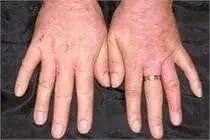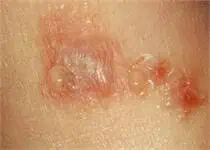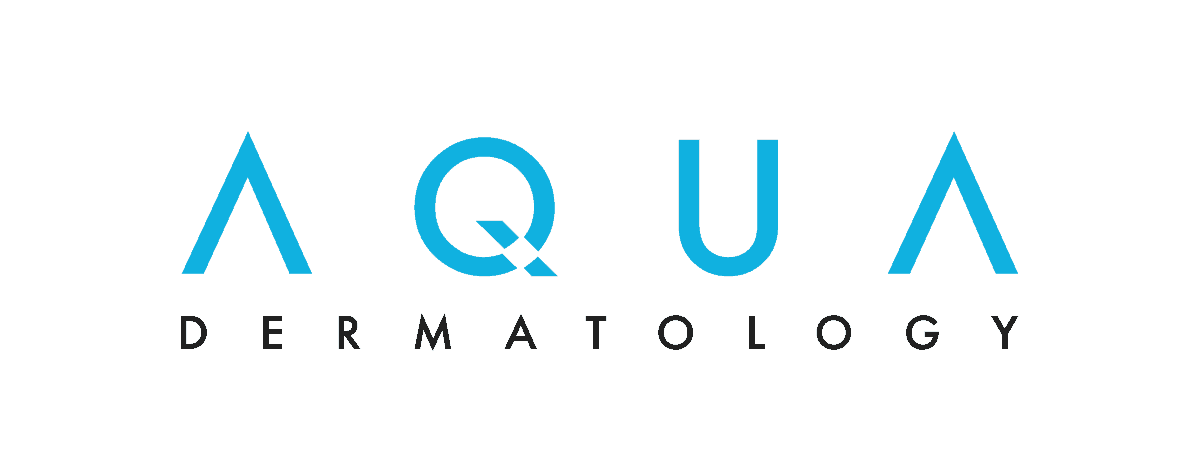DERMATITIS / ALLERGIC
CONTACT RASHES
Call (877) 900-3223
DERMATITIS / ALLERGIC CONTACT RASHES
What Allergic Contact Dermatitis Looks Like
Discovering the Cause
Allergic Contact Dermatitis Treatment
Allergic contact dermatitis is caused by a reaction to substances called allergens that come into contact with your skin. In susceptible people, these contact allergens can cause itching, redness and blisters.
What Allergic Contact Dermatitis Looks Like
In initial (acute) severe cases such as poison ivy, the skin gets red, itchy, swollen and develops tiny blisters, which may break and leave crusts and scales. The skin becomes thick, red and scaly with long-term (chronic) exposure to an allergen. Later the skin may darken and become leathery and cracked. Allergic contact dermatitis can be difficult to distinguish from other rashes.
Discovering the Cause

Patch tests are a safe and easy way to diagnose contact allergies. Patch tests are different from injection or scratch skin tests because they test for different allergens. In patch tests, small amounts of the possible common allergens are applied to the skin on strips of tape and then removed after two days. A positive allergy test shows up as a small red spot at the site of the patch.
Common allergens include nickel, rubber, dyes, preservatives, medications, fragrances, poison ivy, poison oak and related plants.
NICKEL DERMATITIS

Nickel is found in many metal products, including gold jewelry, and is commonly used in metal alloys. Many chrome-plated objects contain enough nickel to produce a reaction in sensitive people. Stainless steel also contains nickel, but it is bound so tightly that it is safe for most nickel-sensitive individuals.
Sweating increases dermatitis in nickel-sensitive people as well. Items containing nickel can cause an itchy, prickly sensation with 15 to 20 minutes after touching sweaty skin. A rash may appear within a day or two. These same items can be often worn for several hours without any problems if sweat is not present.
Earrings containing nickel can cause earlobe dermatitis, a very common problem. The nickel allergy may start with the needles used to pierce ears and the first pair of earrings. Sterile stainless steel needles should be used for piercing, and only nickel-free earrings should be worn for at least the first three weeks.
Clothing fasteners made of nickel, such as buckles, zippers, buttons, and metal clips, can cause dermatitis. Nickel-sensitive people can substitute nylon accessories.
RUBBER

Rubber products often cause allergic contact dermatitis. Chemical additives in rubber can cause the reaction.
Rubber, especially latex, can cause immediate allergic reactions, including itching, burning, and hives where there has been contact with the rubber object. Some people experience itching, tearing eyes, and shortness of breath. This is more common in people who often wear tight-fitting rubber gloves, such as medical workers.
Rubber gloves may also cause dermatitis on the skin of the hands under the glove. Powder-free rubber gloves may be less allergenic. Vinyl or other synthetic gloves should be substituted if one is known to be allergic to rubber or latex.
Women who have a rubber allergy can wear undergarments with an elastic called spandex if they do not have rubber-backed fasteners or edges. Girdles and bras with no rubber are also available.
Some cases of allergic contact dermatitis from shoes are caused by ingredients in the rubber used in the construction of the shoe. Adhesives in shoes can also cause problems. Even leather shoes may contain adhesives. Shoes without rubber should be substituted.
CHROMATES
Chromates contain chromium and are commonly responsible for allergic contact dermatitis from cement, leather, some matches, paints, and anti-rust products. Contact with chromium is common in jobs in the automobile, welding, foundry, cement, railroad, and building repair industries. Chromates are also used to tan leather for shoes and can result in shoe dermatitis. Vegetable-tanned footwear can be used as an alternative.
Some matches contain chromates. Touching unlit matches can contaminate fingers. Fumes from a lit match and the charred match head also contain traces of chromates. Placing used matches or book matches in a pocket will contaminate the pocket lining.
HAIR DYES
Most people can color their hair without allergic reactions. However, some are sensitive to para-phenylenediamine (PPD). This ingredient is found in permanent hair dyes that are mixed with another chemical, such as peroxide, before application.
People allergic to PPD should not use any permanent hair dyes. About one in four people allergic to PPD are also allergic to ingredients in semi-permanent dyes. Follow the package instructions for a patch test before using any hair dye.
Most people allergic to PPD can use temporary dyes or rinses to blend in gray or brighten hair. A few people, however, will react to these dyes, too.
While PPD dyes are rare in clothing, other dyes that may react like PPD (cross-react) may be present. As a result, some PPD-sensitive patients cannot wear dark clothing; especially clothing made of synthetic fibers like polyester or nylon.
About 25% of PPD-sensitive people are also allergic to certain local anesthetics, like benzocaine, that are chemical relatives of PPD.
NEOMYCIN
Neomycin is a common allergen found in both prescription and non-prescription topical antibiotic creams, ointments, lotions, ear drops, and eye drops. Neomycin may also be present in combination with topical steroids and other antibiotics like triple antibiotic first aid creams.
People who are allergic to neomycin and treat their cuts, abrasions, and rashes with over-the counter neomycin-containing creams frequently develop neomycin-induced dermatitis.
SKIN CARE PRODUCTS
Perfumes, lotions, and cosmetics may cause allergic contact dermatitis. Some people are sensitive to the fragrance chemicals. People with fragrance allergy can use fragrance-free products, but “unscented” products may still have a “masking” fragrance added to cover up the smell of the chemicals.
Others are sensitive to the preservative chemicals needed to prevent skin care products from spoiling. Persons may be sensitive to only one preservative chemical and not others. This can be determined by patch testing. There are very few truly preservative-free products.
POISON IVY AND ITS RELATIVES

This plant family includes poison ivy, poison oak, and poison sumac. In the US, these plants produce many cases of allergic contact dermatitis. The reaction looks the same in all of them. Often, patients develop lines of small blisters on the skin where the plant brushed against them.
People sensitive to poison ivy, oak, and sumac are frequently allergic to other plant oils, such as a furniture lacquer obtained from the Japanese lacquer tree, which contains such an oil, as do mango rinds and cashew shells. Your Water’s Edge Dermatology practitioner can provide you with information to help you avoid other things that can cause these allergic reactions from occurring.
Allergic Contact Dermatitis Treatment
Mild rashes that occur from allergic contact dermatitis usually respond to topical steroid creams and/or oral antihistamines that your Water’s Edge Dermatology practitioner can prescribe. It may also be necessary to apply moist compresses to blistered areas for a few days and keep these areas covered.
Severe rashes may need to be treated with systemic methods such as oral and injectable corticosterioids, antibiotics, or other anti-inflammatory and immunologic agents.
People with allergic contact dermatitis should:
- Avoid the allergen that causes the reaction and chemicals that cross-react with it. Your Water’s Edge Dermatology practitioner can help you identify items to avoid.
- Substitute products that do not cause reactions. Your dermatologist can suggest sources for these products.





